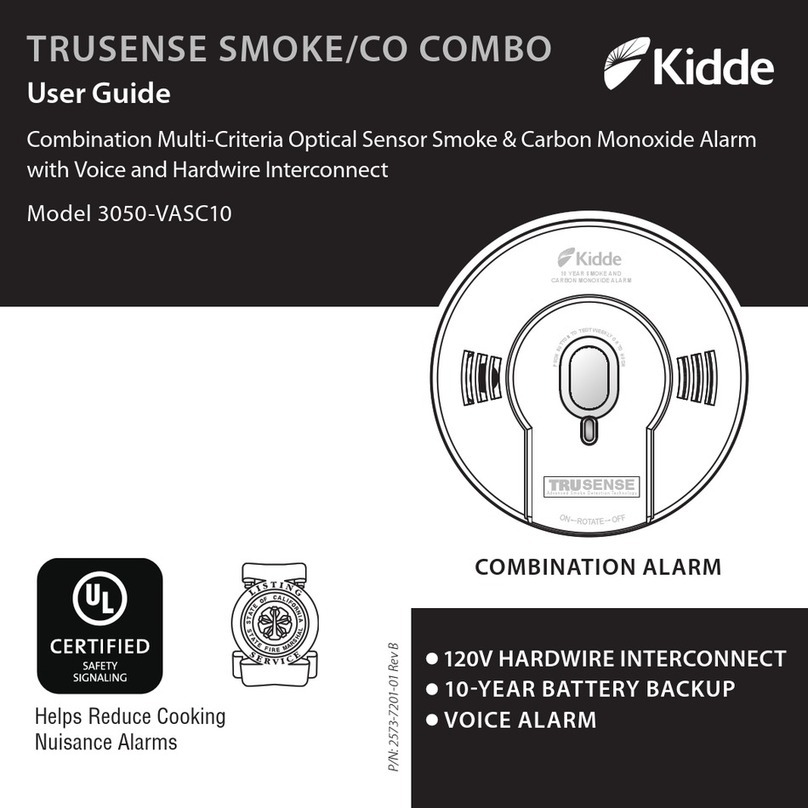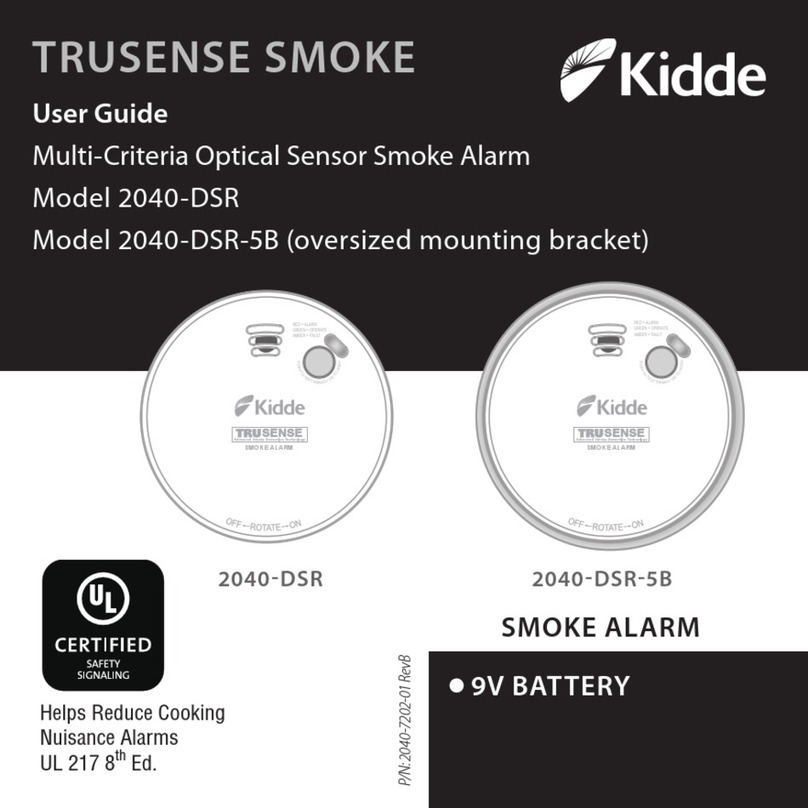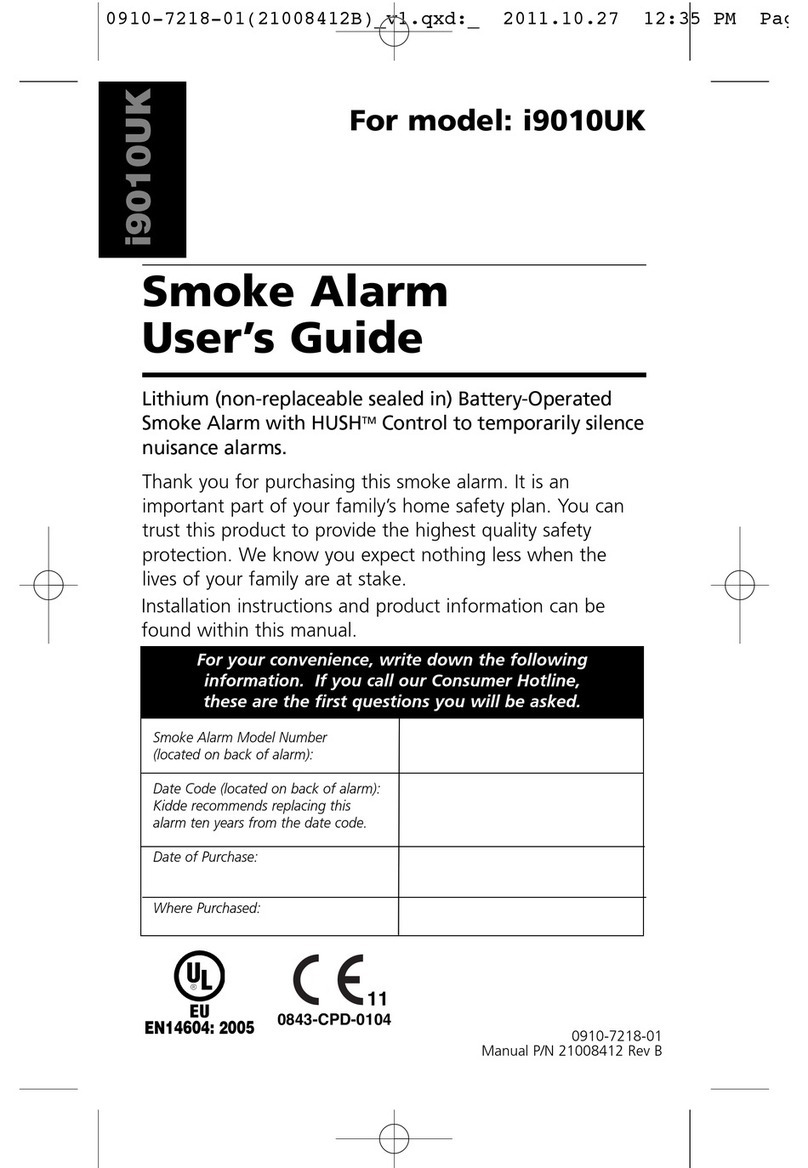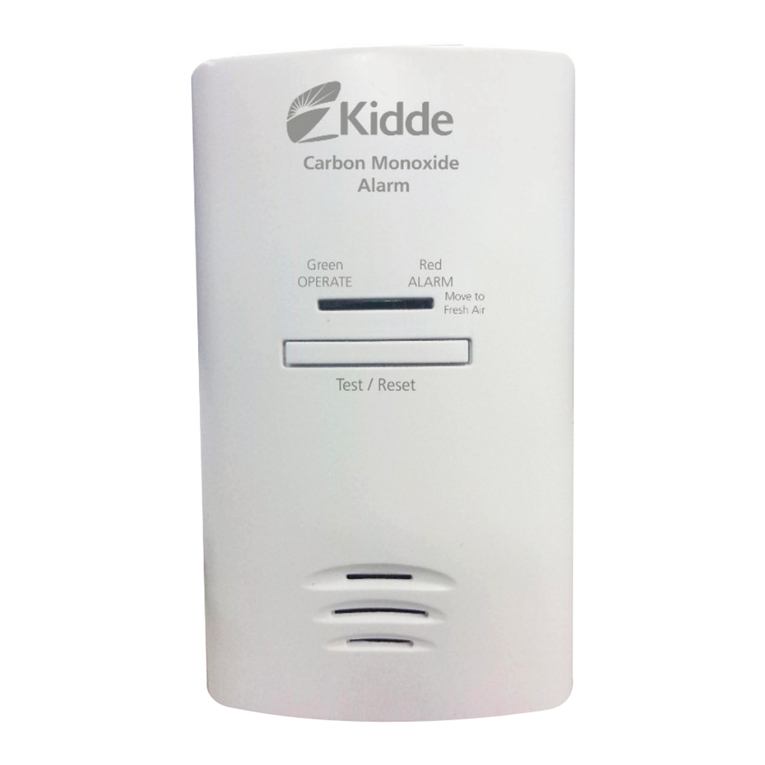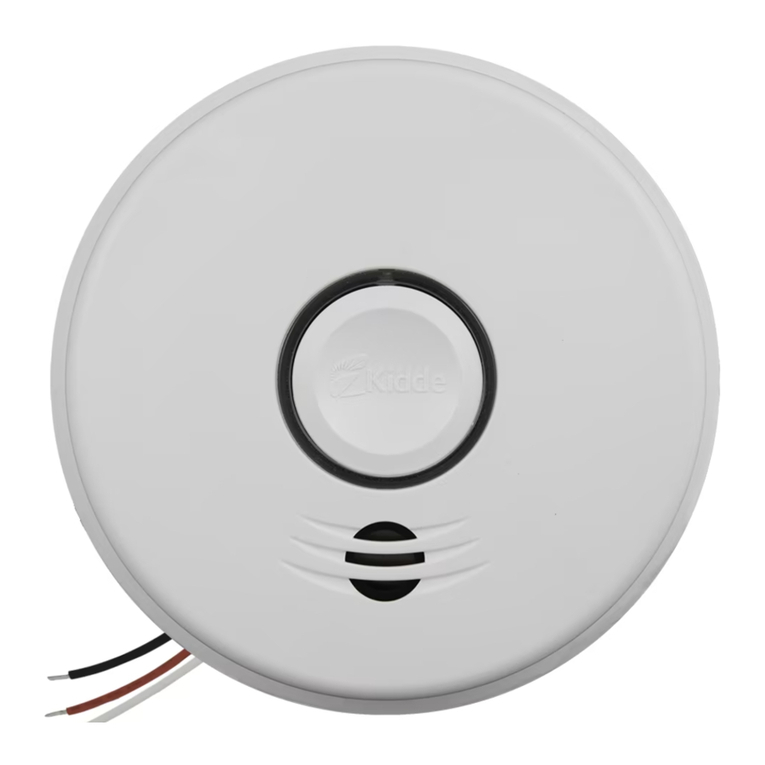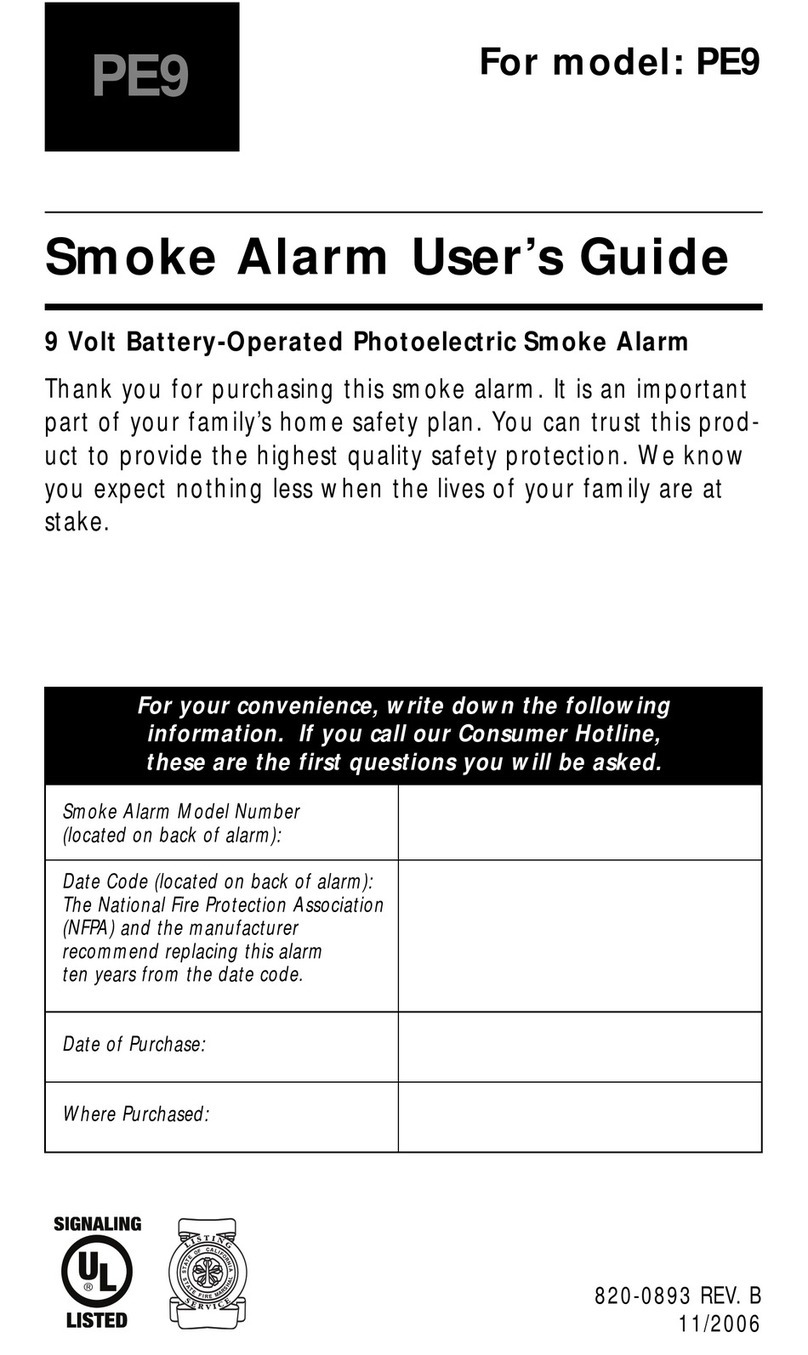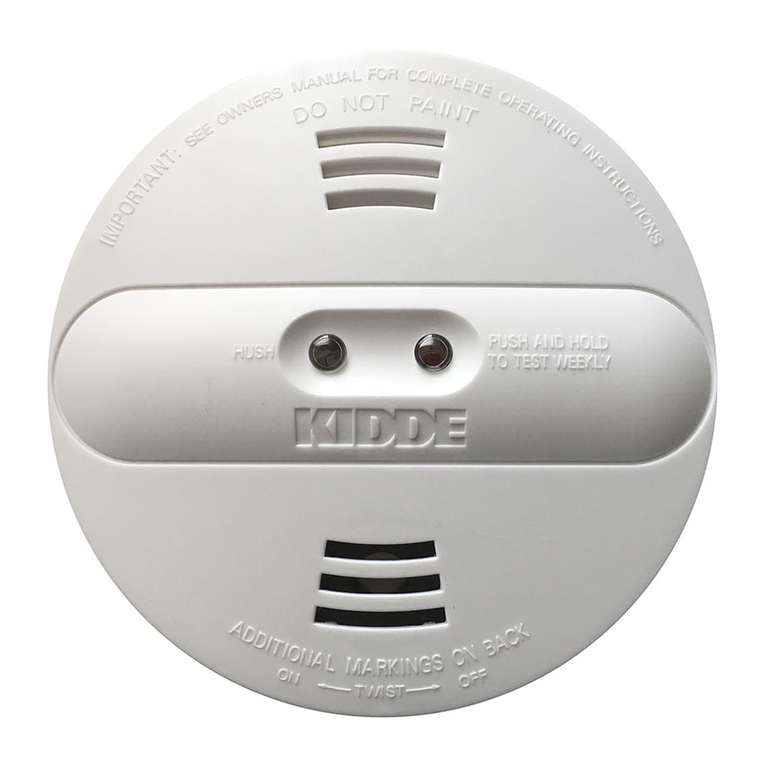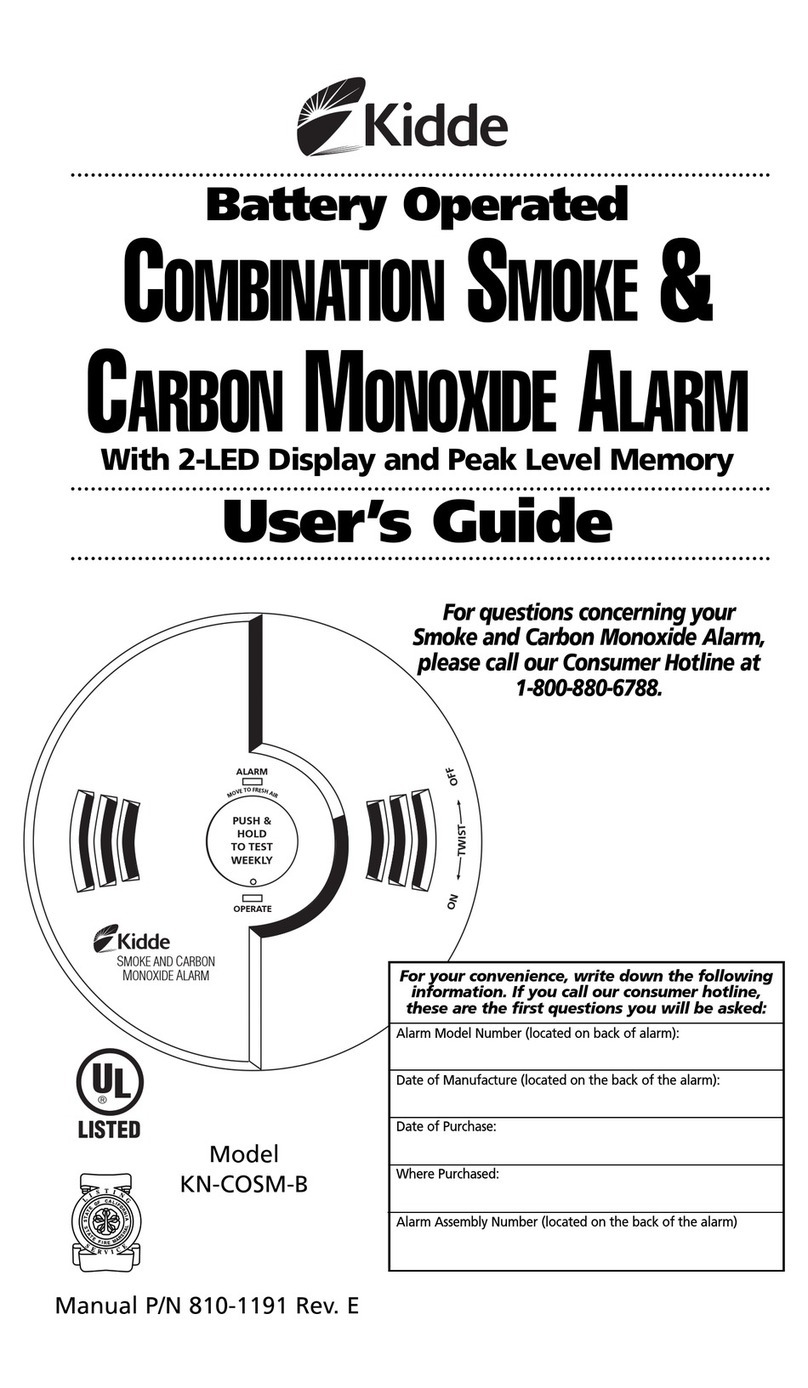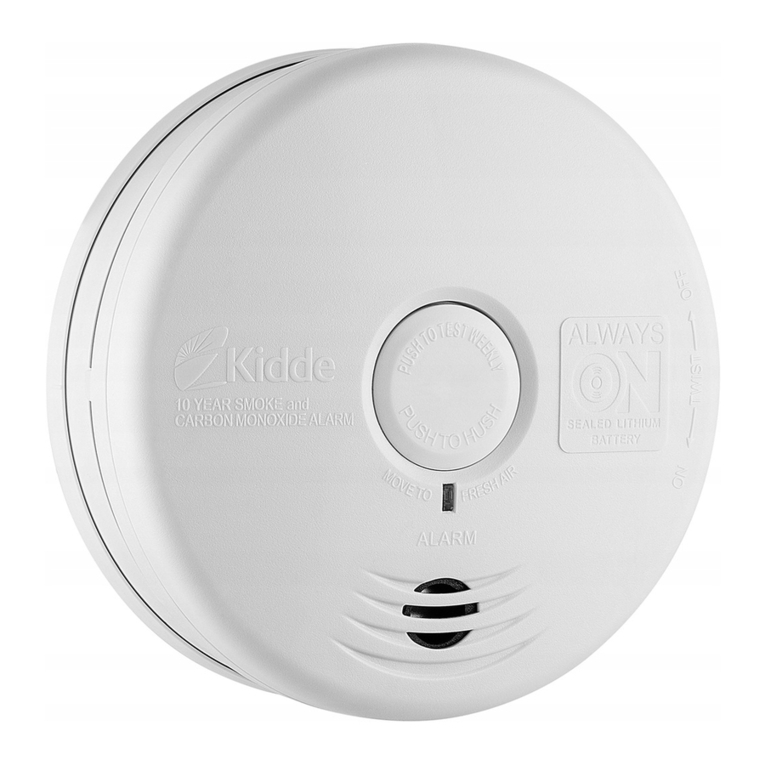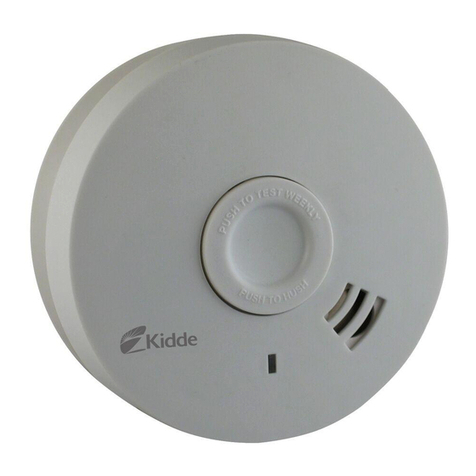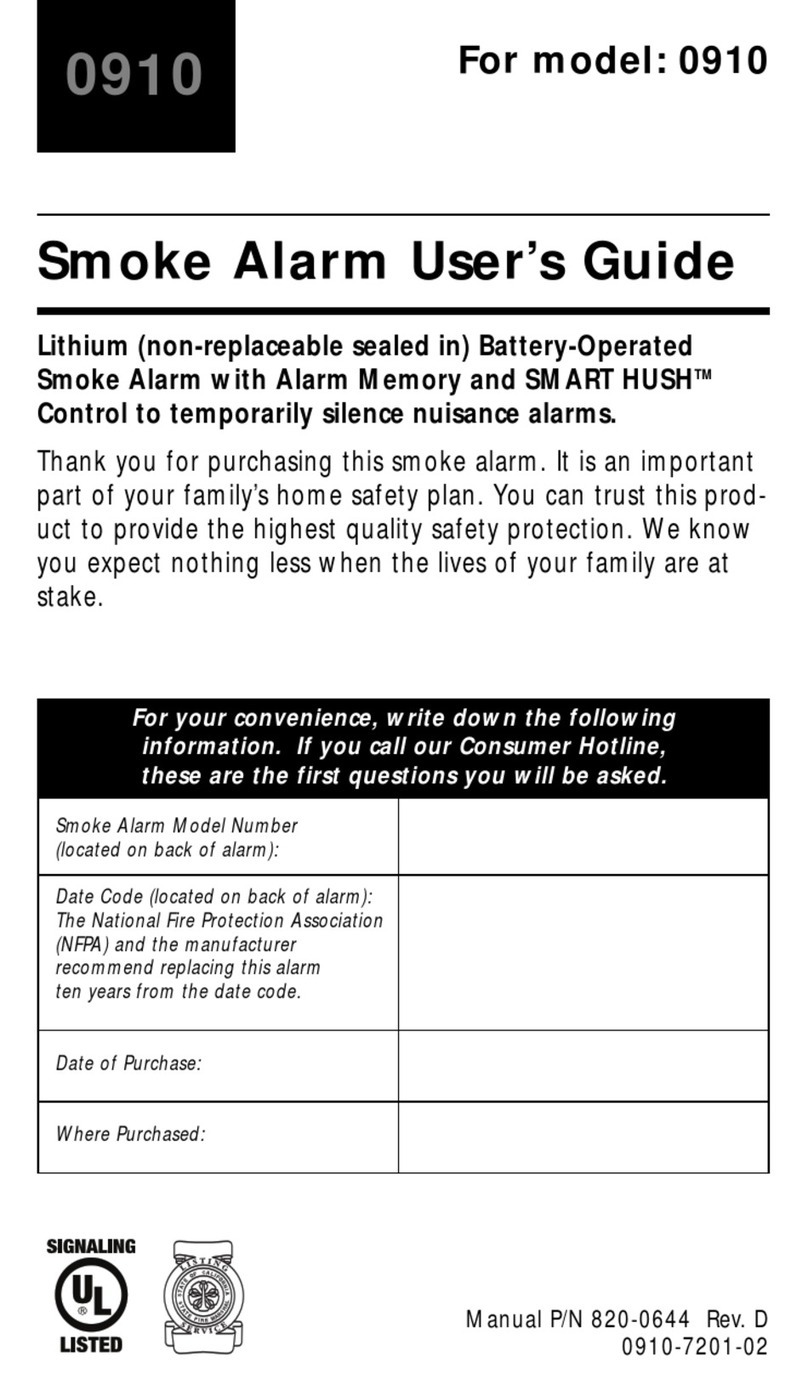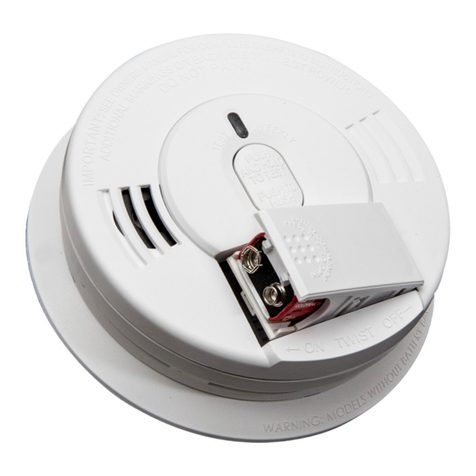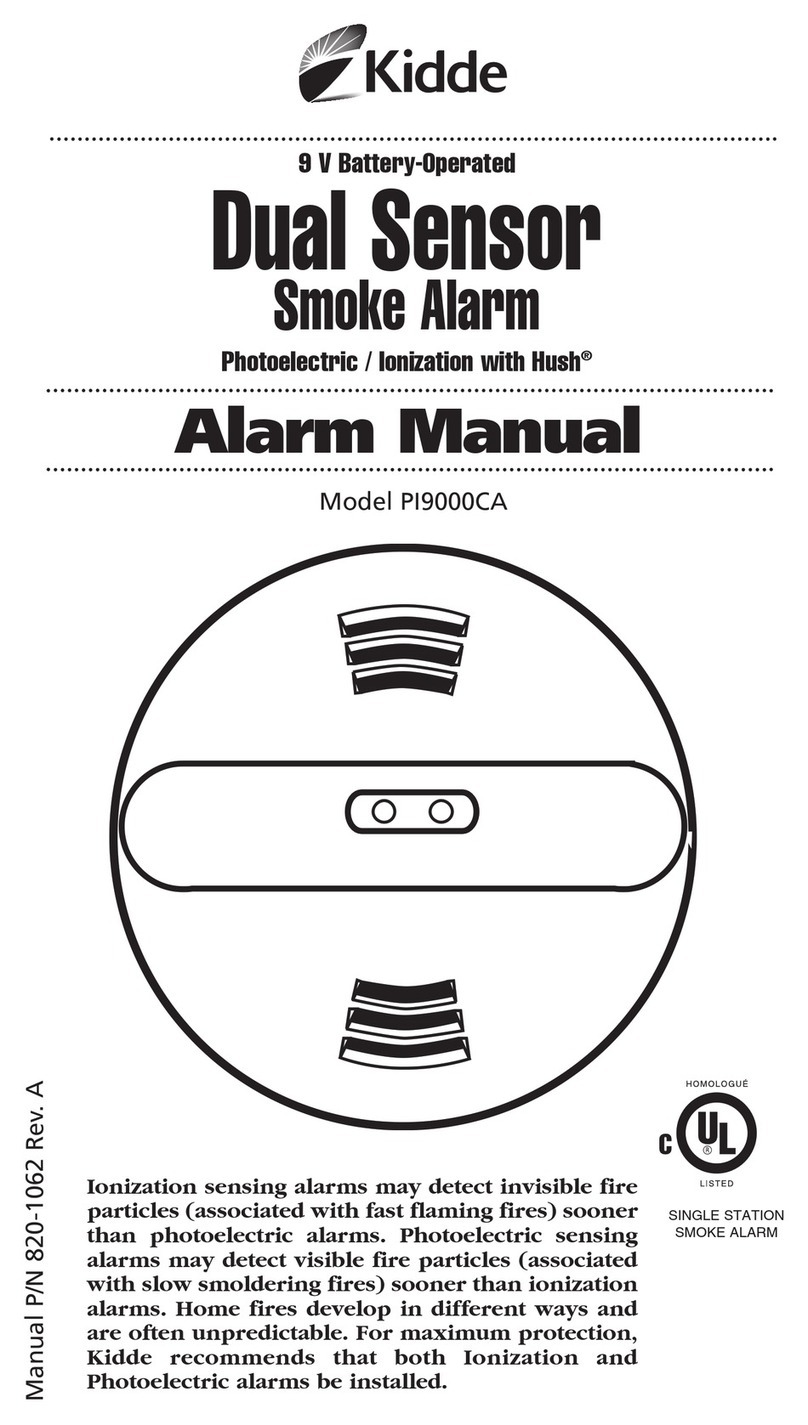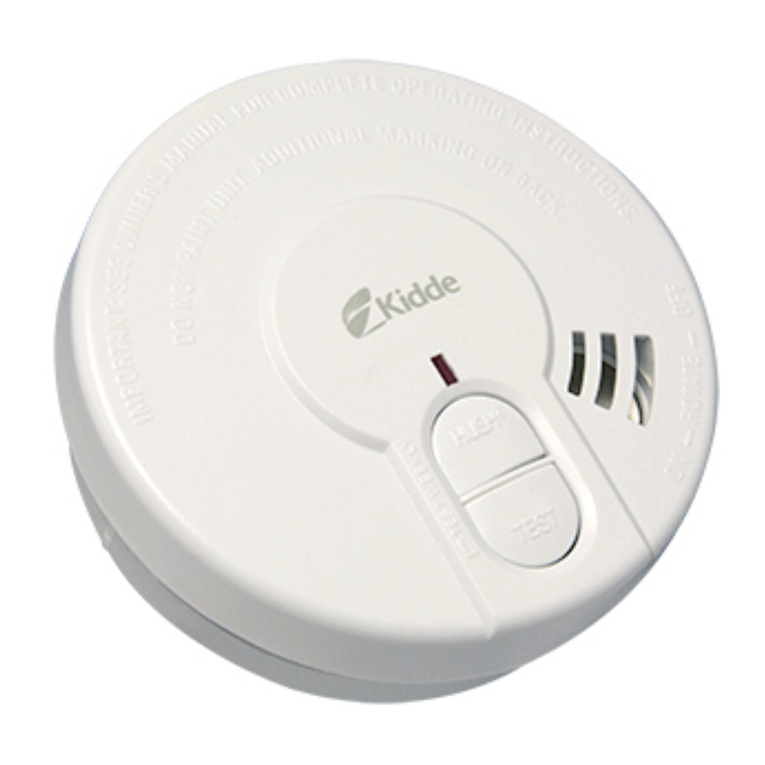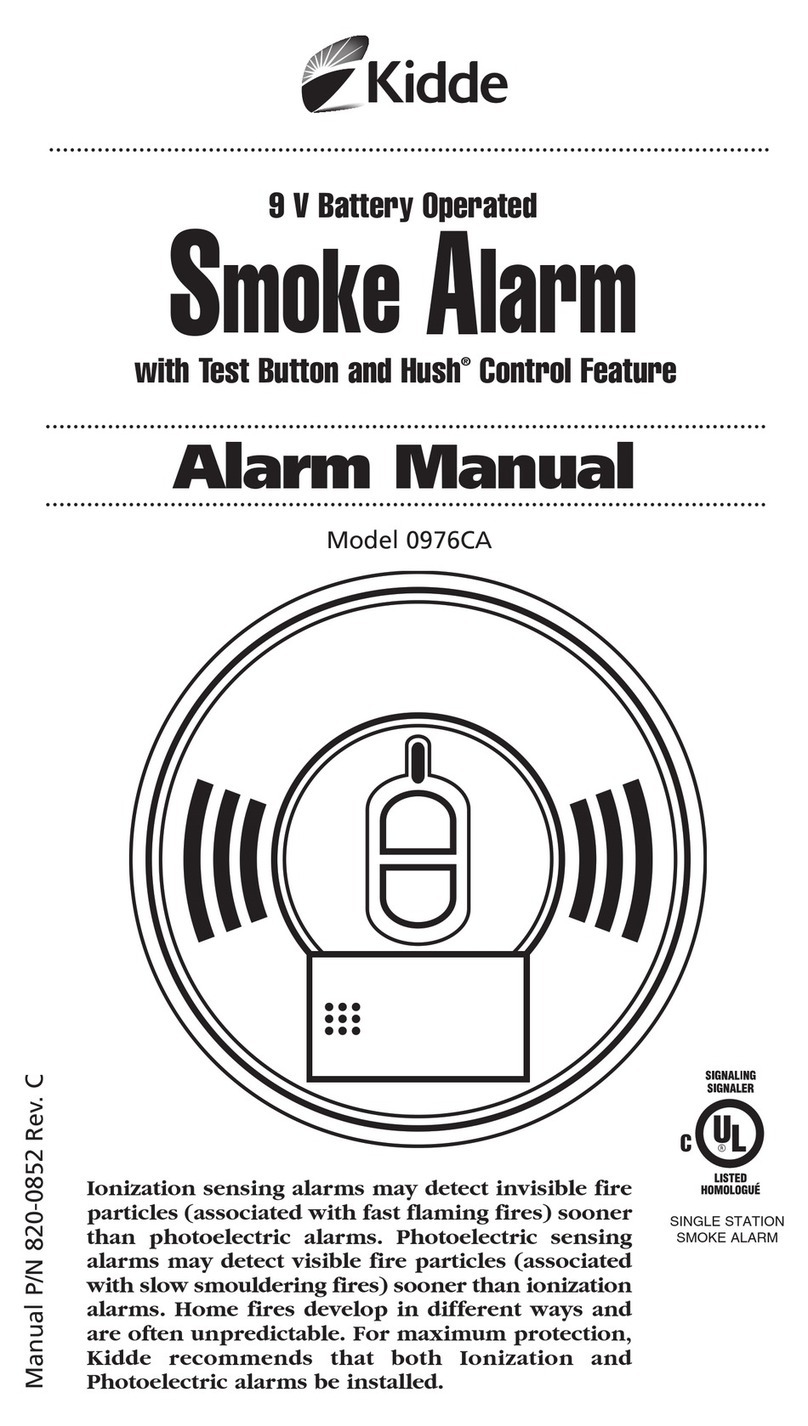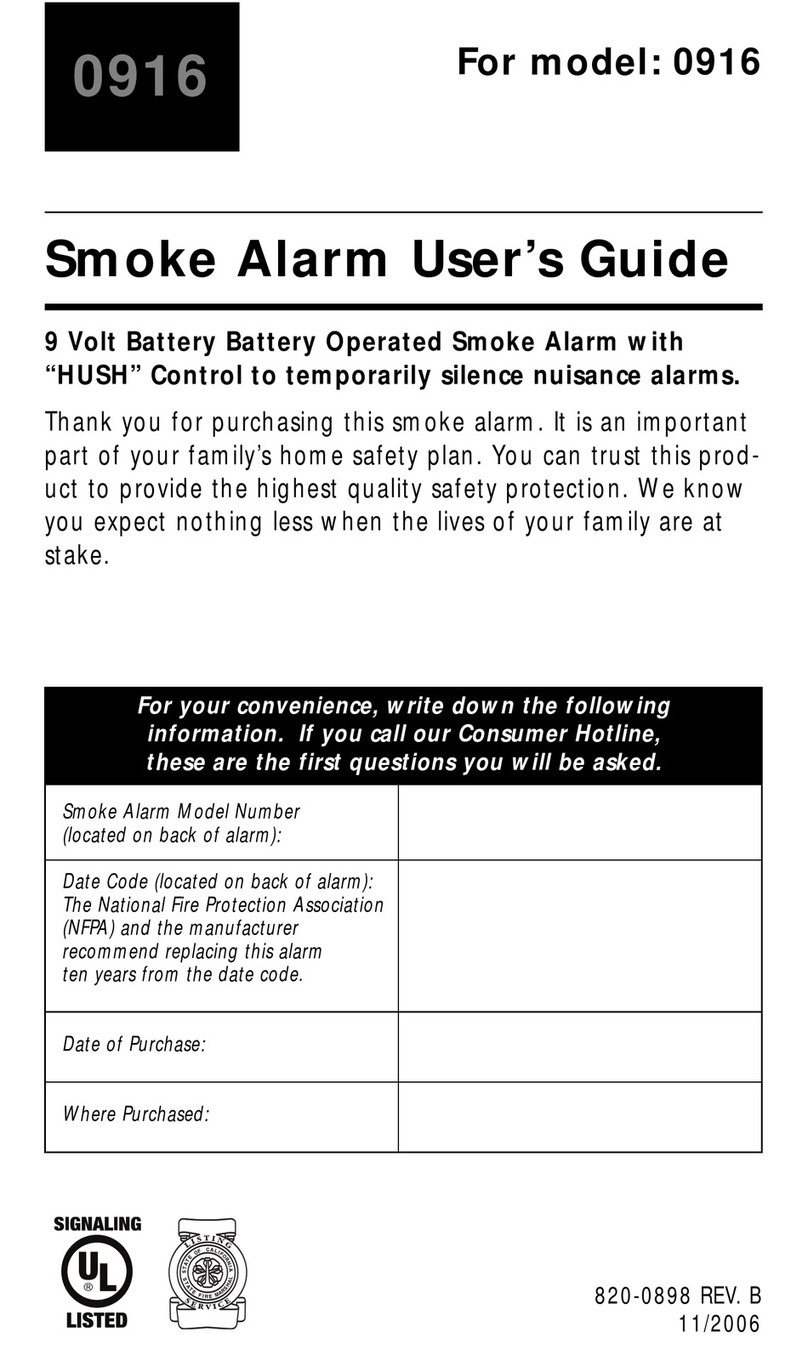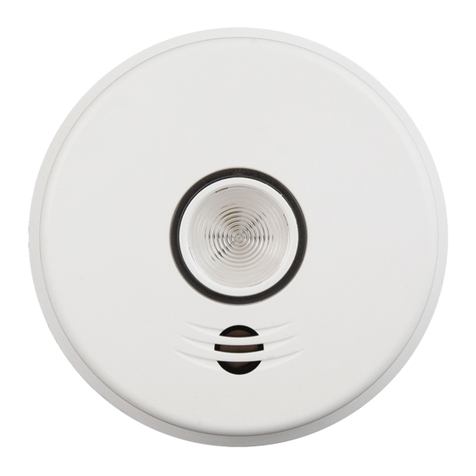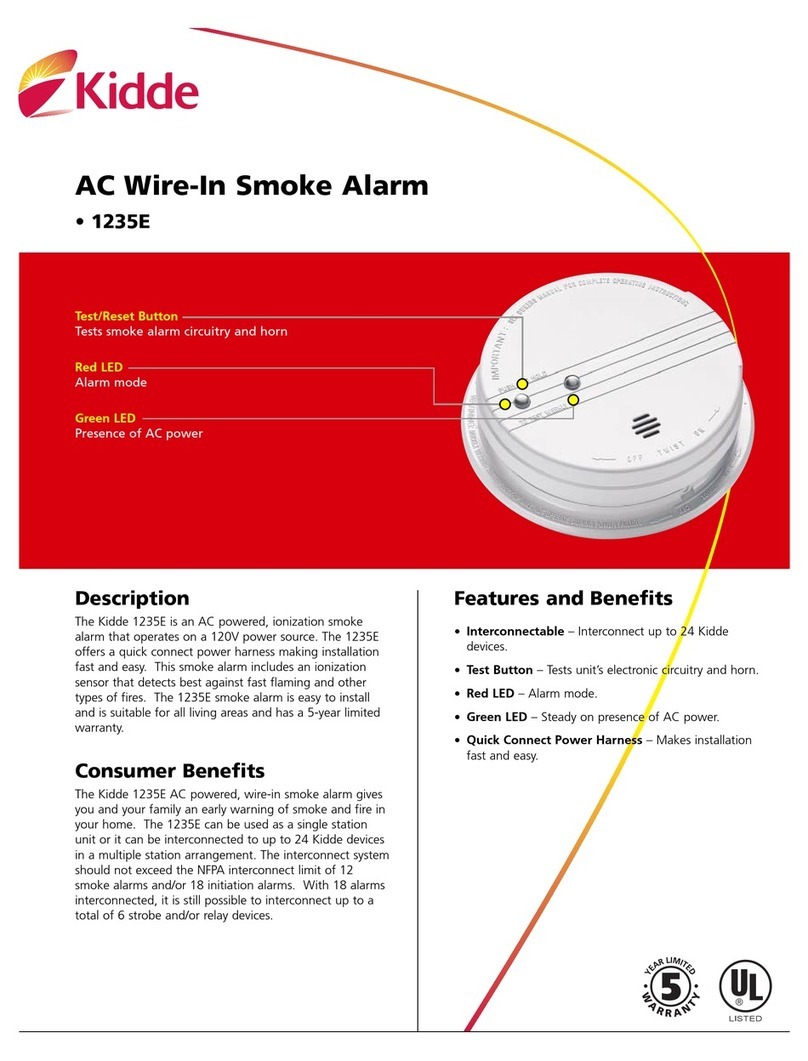
WARNING: Test your smoke alarm operation after R.V. or
mobile home vehicle has been in storage, before each trip
and at least once a week during use.
Locations to Avoid
• Do not install within 0.9 m (3') of the following: The
door to a kitchen, or a bathroom that contains a tub or
shower, forced air supply ducts used for heating or
cooling, ceiling or whole house ventilating fans, or other
high air-flow areas.
• Do not place the alarm where drapes or other objects
will block the sensor. Smoke must be able to reach the
sensor to accurately detect conditions.
• Do not install in peaks of vaulted ceilings, “A” frame
ceilings or gabled roofs. (Less than 10 cm (4") from the
peak of an “A” frame type ceiling.)
• Install at least 30.5 cm (12") away from fluorescent
lights as electronic noise maycause nuisance alarms.
• Keep out of insect infested areas. Avoid excessively
dusty,dirty or greasy areas. Dust particles maycause
nuisance alarms or failure to alarm.
• Extreme temperatures may effect the sensitivity of the
alarm. Do not install in areas where the temperature is
colder than 4.4°C (40°F) or hotter than 37.8°C (100°F),
such as garages and unfinished attics.
• Do not install in areas where the relativehumidity (RH)
is greater than 85%. Very humid areas, with moisture
or steam, can cause nuisance alarms.
• Avoid placing smoke alarms in kitchen areas. Normal
cooking maycause nuisance alarms. If a kitchen alarm
is desired, it should have an alarm silencer feature or
be a photoelectric type.
• Do not place in the garage. Particles of combustion are
present when you startyour automobile.
• Smoke alarms are not to be used with detector guards
unless the combination (alarmand guard) has been
evaluated and found suitable for that purpose.
Installation
5
